#Gum Disease and Periodontal Treatment
Explore tagged Tumblr posts
Text
Stop Cavities Without the Drill: U Shine Dental Offers Silver Diamine Fluoride Treatment

Dental cavities have long been a common concern, affecting people of all ages. Traditionally, treatment options involved fillings, drilling, or even more extensive procedures. But what if there was a simpler, less invasive way to stop cavities in their tracks? Enter Silver Diamine Fluoride (SDF)—a breakthrough treatment offered by U Shine Dental - Old Town in Alexandria, VA.
What is Silver Diamine Fluoride (SDF)?
SDF is a revolutionary liquid solution that helps halt the progression of cavities while protecting teeth from further decay. Applied directly to the affected area, SDF works by killing bacteria, strengthening enamel, and reducing sensitivity, making it a great option for both adults and children.

Who Can Benefit from SDF Treatment?
SDF is particularly effective for:
Children and adults with high cavity risk
Patients with dry mouth (xerostomia)
Individuals with limited access to traditional dental care
Patients seeking a non-invasive, pain-free option
Those who need temporary relief before definitive treatment
Why Choose SDF Over Traditional Fillings?
Unlike traditional fillings, which require drilling and removal of decay, SDF is a simple, pain-free application that can be completed in minutes. It is ideal for those who experience dental anxiety or have medical conditions that make traditional treatments challenging.

Schedule Your SDF Consultation Today
If you or a loved one is looking for an effective, minimally invasive way to manage cavities and reduce dental discomfort, U Shine Dental is here to help. Contact us today to learn more about Silver Diamine Fluoride treatment and take a step toward stronger, healthier teeth!
📍 U Shine Dental - Old Town 303 S Columbus St Alexandria, VA 22314 📞 (703) 549-7492 🌐 www.ushinedds.com
About U Shine Dental - Old Town
At U Shine Dental – Old Town, we redefine dental visits by combining expert care with a warm, patient-centered approach. Our team offers personalized treatments, advanced technology, and a relaxing atmosphere. Whether you need preventive care, cosmetic enhancements, or restorative dentistry, we’re here to help. Visit us today and see why our patients love their smiles!
#Oral Surgery#Emergency Dentist Appointments#Dental Implants#Root Canals#Kids Dentistry#Restorative Dentistry#Gum Disease and Periodontal Treatment#Sedation Dentistry#Braces and Orthodontics#Sleep Apnea Treatment#Dental Veneers#Dentures#Dental Crowns#Teeth Whitening#Cosmetic Dentistry#Family Dentistry
2 notes
·
View notes
Text
Early Detection Saves Lives: VELscope Oral Cancer Screening at East Madison Dental, Dumont, NJ

When it comes to oral cancer, early detection is crucial. Without proper screening, a person may have oral cancer and not even know it until it reaches an advanced stage. At East Madison Dental in Dumont, NJ, Dr. Mary Kiledjian, DMD, and her team utilize the VELscope Oral Cancer Screening System—an advanced diagnostic tool designed to detect abnormal tissue changes before they become serious concerns.
Why Is Early Detection So Important?

Oral cancer can develop silently, often without noticeable symptoms in its early stages. Unfortunately, by the time visible signs appear, the disease may already have progressed significantly. Studies show that when oral cancer is detected and treated early, the five-year survival rate increases by 80-90%. This is why routine screenings play a crucial role in maintaining oral health and saving lives.
How Does the VELscope Oral Cancer Screening System Work?
The VELscope system is a cutting-edge, non-invasive tool that enhances the ability of dental professionals to detect abnormal tissue changes inside the mouth. The screening process is quick, painless, and highly effective. Here’s how it works:
Specialized White Light Source & Viewing Scope – The dentist uses a high-energy blue light that allows them to examine the tissues in the mouth more closely.
Identification of Abnormal Tissue – Under the special light, healthy tissues appear bright, while abnormal tissues may appear darker, helping dentists pinpoint areas of concern.
Further Examination & Follow-up – If abnormal tissue is detected, it doesn’t necessarily mean cancer is present. Dr. Kiledjian may recommend a follow-up visit to reassess the area. In some cases, a gentle, non-invasive brush biopsy may be performed to determine if further action is needed.
Who Should Get an Oral Cancer Screening?
While oral cancer can affect anyone, certain risk factors increase the likelihood of developing the disease. You may be at a higher risk if you:
Use tobacco products (smoking, chewing tobacco, etc.)
Consume alcohol regularly
Have a history of HPV (human papillomavirus) infection
Have a family history of oral cancer
Experience prolonged exposure to the sun (which increases the risk of lip cancer)
Are over the age of 40
Even if you don’t have any risk factors, routine screenings are essential. Oral cancer can occur in anyone, and early detection is key to successful treatment.
Get Screened Today at East Madison Dental

At East Madison Dental, Dr. Mary Kiledjian, DMD, and her team are dedicated to providing top-tier preventive care, including advanced oral cancer screening. The VELscope Oral Cancer Screening System is just one of the many ways they ensure their patients receive the best possible care.
Don’t wait until symptoms appear—schedule your oral cancer screening today at East Madison Dental and take a proactive step toward protecting your health.
📍 East Madison Dental
📍 79 E Madison Ave, Dumont, NJ 07628
📞 201-501-8282
#Oral Surgery#Preventive dentistry#Emergency Dentist Appointments#Invisalign Braces#Dental Implants#Root Canals#Kids Dentistry#Restorative Dentistry#Gum Disease and Periodontal Treatment#Sedation Dentistry#Laser Dentistry#Dental Veneers#All On 4® Dental Implants#Dentures#Smile Makeovers#Dental Crowns#Teeth Whitening#Wisdom Teeth Removal#Cosmetic Dentistry#Family Dentistry#orthodontics#Implant Dentistry#Multi speciality.
2 notes
·
View notes
Text
Toothpaste Truths: Separating Fact from Fiction by Dr. Jeffrey Henneberg - Smile Source Spokane - Valley

Toothpaste is an essential part of our daily routine, but do we really know the truth about it? Over time, several misconceptions have spread, leading people to believe things that aren’t entirely accurate. Dr. Jeffrey Henneberg of Smile Source Spokane - Valley is here to clear up some of the most common misunderstandings about toothpaste and help you make better choices for your oral health.

Misconception 1: More Toothpaste Means Cleaner Teeth
Ever seen a toothpaste commercial where they cover the entire brush with toothpaste? In reality, you don’t need that much! The American Dental Association (ADA) recommends a pea-sized amount for adults and just a rice-sized smear for children under three. Using too much can lead to excessive foam, making it harder to brush properly.
Misconception 2: Whitening Toothpaste Works Like Magic
Many people expect whitening toothpaste to magically transform their teeth overnight. While these toothpastes help remove surface stains, they don’t change the natural color of your teeth instantly. The best results come from long-term use combined with good oral hygiene and professional cleanings.

Misconception 3: Natural Toothpaste is Always the Best Choice
Natural products are great, but not all natural toothpaste options contain fluoride, which is crucial for cavity prevention. If you’re considering switching to natural toothpaste, make sure to check the ingredients and consult your dentist to ensure it meets your oral health needs.
Misconception 4: Fluoride Toothpaste is Unnecessary if Your Water is Fluoridated
Fluoride in drinking water does help protect teeth, but it’s not a substitute for fluoride toothpaste. Brushing with fluoride toothpaste adds an extra layer of protection, helping to remineralize enamel and prevent cavities.
Misconception 5: Expired Toothpaste Still Works Fine
Toothpaste has an expiration date for a reason! Over time, fluoride loses its effectiveness, and the texture may change. Using expired toothpaste may not give your teeth the protection they need, so it’s best to replace it when it expires.

Misconception 6: Foam Equals Effectiveness
Many people think the foamier the toothpaste, the better it cleans. But that’s not true! Foam is created by detergents like sodium lauryl sulfate (SLS), and while it might feel satisfying, it doesn’t actually make the toothpaste more effective. Some great toothpaste options, especially those for sensitive teeth, produce little to no foam but still do an excellent job of cleaning and protecting your teeth.
The Bottom Line
"At Smile Source Spokane - Valley, we believe that patient education is key to achieving optimal oral health,” says Dr. Jeffrey Henneberg. “Understanding the facts about toothpaste can help people make informed choices and maintain healthier smiles."
By debunking these misunderstandings, you can make better decisions for your dental health. If you’re unsure about which toothpaste is best for you, consult your dentist for personalized recommendations.
For more dental tips and expert care, visit Smile Source Spokane - Valley today!

Smile Source Spokane - Valley 📍 1215 N McDonald Rd #203, Spokane Valley, WA 99216 📞 (509) 924-2866 🌐 www.smilesourcespokane.com/spokane-valley-wa/
#Oral Surgery#Emergency Dentist Appointments#Dental Implants#Root Canals#Restorative Dentistry#Gum Disease and Periodontal Treatment#Sedation Dentistry#Sleep Apnea Treatment#Dental Veneers#All On 4® Dental Implants#Dentures#Smile Makeovers#Dental Crowns#Teeth Whitening#Cosmetic Dentistry#Family Dentistry
2 notes
·
View notes
Text
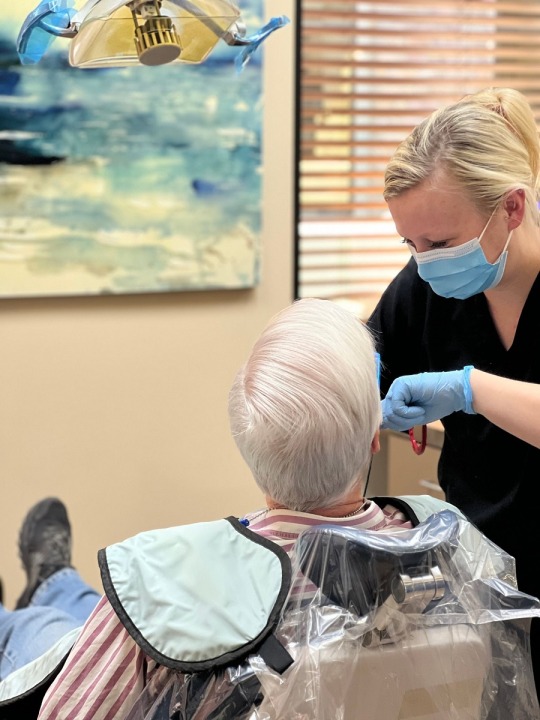
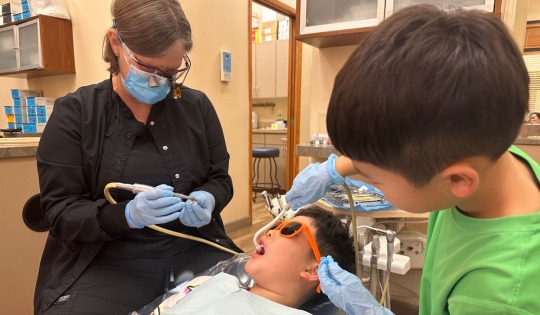

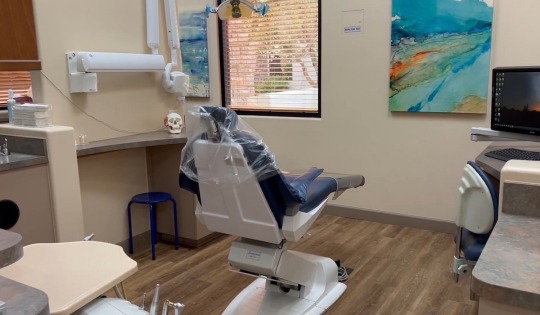

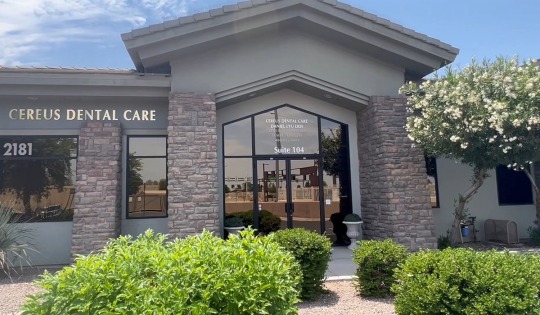
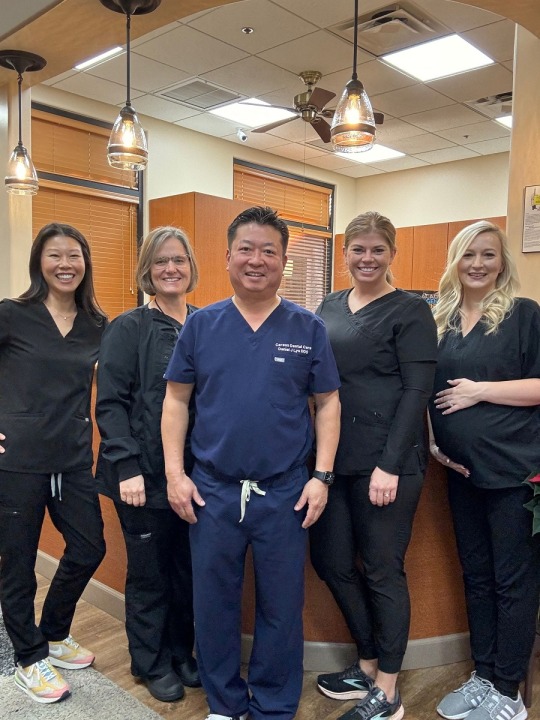
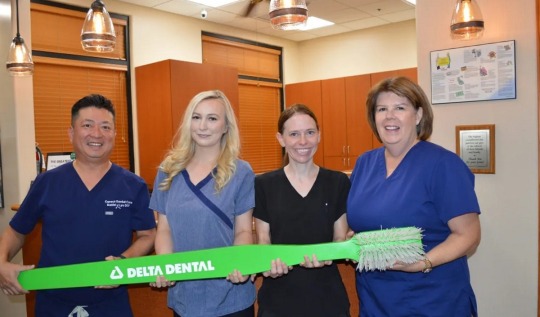
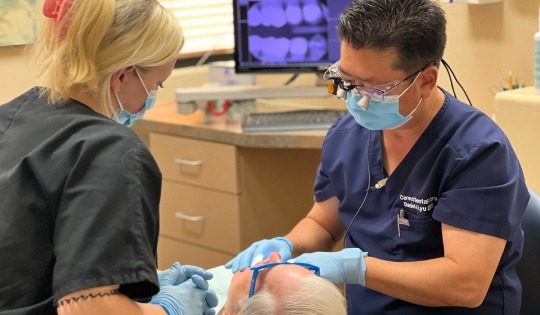
Personalized Care and Advanced Solutions for Every Smile in Tempe, AZ
#Oral Surgery#Emergency Dentist Appointments#Invisalign Braces#Dental Implants#Root Canals#Kids Dentistry#Restorative Dentistry#Gum Disease and Periodontal Treatment#Sleep Apnea Treatment#Dental Veneers#Dentures#Smile Makeovers#Dental Crowns#Cosmetic Dentistry#Family Dentistry
0 notes
Text
Can Periodontitis Cause Jaw Pain?
Periodontitis is a severe gum disease that can lead to significant oral health issues, including jaw pain. It occurs when untreated gingivitis progresses, causing inflammation, infection, and damage to the structures supporting the teeth. If left untreated, periodontitis can contribute to bone loss and chronic pain in the jaw.
How Periodontitis Leads to Jaw Pain
Several factors explain the link between periodontitis and jaw pain:
Inflammation and Infection – When bacteria accumulate in deep gum pockets, it can lead to severe inflammation, causing discomfort and pain that may extend to the jaw.
Bone Loss – Advanced periodontitis can cause the deterioration of the jawbone, leading to structural weakness and persistent pain.
Tooth Mobility and Misalignment – As the disease progresses, teeth may shift, leading to bite problems that can cause strain and discomfort in the jaw.
Abscess Formation – Untreated infections can result in abscesses, which cause intense pain and require immediate dental intervention.

Preventing and Treating Periodontitis to Alleviate Jaw Pain
1. Seek Professional Dental Care
Visiting the Best Dentist in Delhi for routine checkups and professional cleanings can help prevent periodontitis and its associated complications, including jaw pain.
2. Maintain Good Oral Hygiene
Brushing twice a day, flossing daily, and using an antibacterial mouthwash can help reduce plaque buildup and lower the risk of gum disease.
3. Regular Dental Checkups
Scheduling visits to the Best Dental Clinic in Delhi ensures early detection and treatment of gum disease before it progresses to periodontitis.
4. Scaling and Root Planing
A deep cleaning procedure performed by a dentist can remove plaque and tartar from below the gum line, reducing inflammation and preventing further damage.
5. Lifestyle Changes
Avoiding smoking, managing stress, and maintaining a healthy diet rich in vitamins and minerals can help support gum health and reduce the risk of jaw pain caused by periodontitis.

When to See a Dentist
If you experience persistent jaw pain, swollen or bleeding gums, loose teeth, or bad breath, it is crucial to seek immediate care from the Best Dentist in Delhi. Early treatment can prevent further complications and help maintain a healthy smile.
Conclusion
Periodontitis is a serious condition that can lead to jaw pain and other oral health issues if left untreated. Seeking professional care at the Best Dental Clinic in Delhi, practicing good oral hygiene, and making lifestyle changes can help manage and prevent periodontitis, ensuring long-term dental health and comfort.
#Periodontitis jaw pain treatment#Pain in gums and jaw and ear#Can gum disease kill you#Pain under ear behind jaw bone left side#How to relieve jaw and tooth pain#How to stop jaw pain immediately#How to cure gum disease without a dentist#healthyteeth#dentaltips
1 note
·
View note
Text
Comparing Full Mouth Restoration and Partial Treatments in Lomita: Which Is Best?
When it comes to regaining confidence in your smile and restoring full dental function, modern dentistry offers a range of options. At Dr. Smile, patients have access to both comprehensive and targeted dental solutions. Among the most advanced and transformative is Full Mouth Restoration in Lomita, which rebuilds the entire oral structure. However, not every patient requires such an extensive procedure. In many cases, partial treatments may be sufficient and more cost-effective.
In this article, we’ll explore the differences between full mouth restoration and partial treatments, discuss how procedures like Oral Surgery in Lomita and Gum Disease Treatment in Lomita fit into these plans, and help you determine which path might be best for your oral health needs.

What Is Full Mouth Restoration in Lomita?
Full Mouth Restoration in Lomita refers to a customized treatment plan that addresses all aspects of the mouth—teeth, gums, and bite alignment. This comprehensive approach is often necessary when patients present with severe decay, multiple missing teeth, chronic gum disease, or significant jaw misalignment.
At Dr. Smile, full mouth restoration often involves a combination of procedures such as:
Dental implants
Porcelain crowns or bridges
Veneers
Root canals
Periodontal therapy
Occlusal (bite) correction
Orthodontic treatments (if needed)
These procedures are carefully sequenced to restore both aesthetics and functionality. Unlike general or cosmetic dentistry, full mouth restoration aims to rebuild your entire oral system, not just individual teeth.
What Are Partial Dental Treatments?
Partial dental treatments, by contrast, focus on resolving specific issues rather than revamping the entire mouth. They are suitable for patients who have isolated problems, such as a single damaged tooth, minor misalignment, or localized gum issues.
Examples of partial treatments at Dr. Smile include:
Single-tooth crowns or fillings
Dental bonding
Limited Gum Disease Treatment in Lomita
Simple tooth extractions
Preventive cleanings and exams
These treatments typically require fewer visits, lower costs, and shorter recovery times. However, they may not be adequate if your oral health problems are widespread or complex.
The Role of Oral Surgery in Restorative Dentistry:
Whether you're undergoing a full or partial restoration, Oral Surgery in Lomita may be a necessary component of your care. Oral surgery plays a pivotal role in addressing structural and functional issues that can't be resolved through non-surgical methods.
Some common oral surgeries performed at Dr. Smile include:
Tooth extractions (impacted or decayed)
Dental implant placement
Bone grafting
Sinus lifts
Corrective jaw surgery
For patients pursuing Full Mouth Restoration in Lomita, these procedures are often essential steps that lay the groundwork for long-term success.
Gum Health: A Foundation for Any Treatment
Healthy gums are essential, regardless of whether you're receiving full or partial dental treatments. Advanced Gum Disease Treatment in Lomita is often required before any restoration work can begin. Untreated gum disease can undermine even the most advanced restorative procedures.
Dr. Smile offers several gum disease treatments, including:
Deep cleaning (scaling and root planning)
Antibacterial therapy
Laser gum treatments
Surgical interventions for advanced periodontitis
Whether you're undergoing a full restoration or just need a single implant, controlling gum disease is crucial for ensuring the longevity of your dental work.
Full Mouth Restoration vs. Partial Treatments: What Makes Them Different?
If you're trying to decide between a Full Mouth Restoration in Lomita and smaller, partial dental treatments, it helps to understand how they differ in a simple, everyday way.
A Full Mouth Restoration in Lomita is like remodeling your entire house—it takes time, planning, and involves many parts working together. It often includes treatments like dental implants, crowns, and sometimes Oral Surgery in Lomita, especially if there are missing or severely damaged teeth.
On the other hand, partial treatments are more like fixing just one room or area of your house. If you only have one or two problem teeth or mild gum disease, targeted treatments like fillings or Gum Disease Treatment in Lomita can get the job done quickly and affordably.
Here’s a simple breakdown:
Full mouth restoration fixes everything—top to bottom, front to back. It’s best for people with widespread damage or missing teeth.
Partial treatments fix specific problems. They’re best if your mouth is mostly healthy but has a few issues.
Full restorations often involve Oral Surgery in Lomita, while partial treatments may not.
Gum health matters in both cases, but serious restorations almost always start with Gum Disease Treatment in Lomita if there are signs of infection.
Which Option Is Right for You?
Choosing between Full Mouth Restoration in Lomita and partial treatments isn’t just about budget—it's about your long-term oral health. Patients with chronic issues, multiple missing or worn teeth, or severe bite misalignment are ideal candidates for full mouth restoration. It may involve more time and cost upfront, but it prevents recurring problems and often saves money in the long run.
On the other hand, patients with isolated issues—such as a chipped tooth or early-stage gum disease—can benefit from targeted treatments that are minimally invasive and more affordable.
The team at Dr. Smile conducts thorough evaluations to help you decide. Using advanced imaging and diagnostics, they assess the condition of your teeth, gums, and jaw before making recommendations.
Real Patient Results from Dr. Smile:
Many patients in Lomita have experienced life-changing results through Full Mouth Restoration in Lomita performed by Dr. Smile. Restored bite function, improved aesthetics, and relief from chronic pain are just a few of the outcomes that have helped patients regain confidence and comfort.
Likewise, for those who opted for partial treatments, outcomes like successful Gum Disease Treatment in Lomita or efficient Oral Surgery in Lomita have restored health and prevented more serious problems down the road.
Final Thoughts:
Whether you need comprehensive reconstruction or just a focused repair, Dr. Smile offers top-tier dental solutions tailored to your unique needs. Full Mouth Restoration in Lomita is a powerful solution for patients facing multiple dental challenges, but partial treatments remain a smart choice for simpler issues. With access to expert Oral Surgery in Lomita and personalized Gum Disease Treatment in Lomita, patients are assured quality care that supports long-term oral health.
Ready to explore your options? Schedule a consultation at Dr. Smile today and take the first step toward a healthier, more confident smile.
#Full Mouth Restoration in Lomita#Oral Surgery in Lomita#Gum Disease Treatment in Lomita#Dental Implants Lomita#Cosmetic Dentistry Lomita#Restorative Dentistry Lomita#Comprehensive Dental Care Lomita#Advanced Dentistry Services Lomita#Periodontal Treatment Lomita#Smile Makeover Lomita#Tooth Replacement Lomita#Dr. Smile Lomita#Dental Health Lomita#Reconstructive Dentistry Lomita#Teeth Restoration Lomita#dentist#beautiful smile#oral health lomita
0 notes
Text
https://upliftdental.com/dont-let-gum-disease-hold-you-back/
Gum Disease Dental Care Garden Grove
Say goodbye to discomfort and hello to healthier gums. Uplift Dental helps patients overcome gum disease with cutting-edge treatments and a caring approach. Our skilled team works with you to create a personalized treatment plan that restores your oral health and prevents future issues. Gum disease is common, but it’s also highly treatable—let us help you regain your confidence and smile freely again.

#Periodontal Treatment Garden Grove#Gum Disease Treatment Garden Grove#Periodontal Services in Garden Grove#Periodontal Care Garden Grove#Gum Health Treatments Garden Grove#Tmj Treatment Garden Grove#Tmj Therapy for Jaw Pain Garden Grove
0 notes
Text
Explore ADA Code D4211, the targeted gingivectomy procedure for localized gum issues affecting one to three teeth. Learn how this surgery treats gum disease, improves smile aesthetics, and prepares teeth for restoration. This guide covers the procedure, recovery, costs, insurance insights, and alternatives.
#D4211#Gingivectomy#ADA Code D4211#Periodontal Surgery#Gum Surgery#Gum Disease Treatment#Gingival Hyperplasia#Gum Reshaping#Gum Contouring#Gummy Smile Correction#Periodontal Pocket Reduction#Limited Gingivectomy#Gingivectomy Recovery#Gingivectomy Cost#Dental Insurance Coverage#Dental Billing Codes
0 notes
Text
If you're experiencing signs of gum disease, don’t wait—get expert care from a provider you can trust. At our Salinas dental office, Dr. Paviterjot K. Sandhu offers specialized treatment for periodontal disease, along with comprehensive general and cosmetic dentistry services tailored to your unique needs.
We combine advanced dental technology with compassionate, personalized care—all in a comfortable, spa-like setting designed to put you at ease. From routine checkups to complete smile makeovers, our goal is to help you achieve a healthy, confident smile that lasts.
Whether you're looking for a skilled periodontist or simply want to improve your oral health, we’re here for you.
#dental care#salinas dental#dental clinic#periodontal disease#gum specialist near me#best periodontist near me#periodontitis treatment cost#coastal dental#dental center#gum disease#periodontic#gingivitis treatment
0 notes
Text
Looking for professional Periodontist for Your Dental Health?
Oral health is essential to our overall well-being as it helps radiate positivity through sparkling teeth. When it comes to dental care, periodontists play a crucial role. The periodontist plays an essential role in keeping our teeth healthy and shiny.
In this article, we’ll look at the role of a periodontist and how to find Best Periodontist Clinic in Los Angeles for yourself to have an attractive tooth.
The Role of a Periodontist
A periodontist is a dental expert who focuses on the health and maintenance of our teeth. They can quickly identify and treat gum diseases like gingivitis and periodontitis by using proven techniques and managing the condition effectively. They are often the most productive specialists in dental implant procedures. They have the expertise to safely place dental implants into the jawbone and provide patients with a stable and functional solution to missing teeth.
Periodontist in Downtown Los Angeles perform deep cleaning procedures called scaling and root planing to remove plaque and tartar from below the gum line. It helps prevent gum disease from increasing. They are trained in reforming techniques to rebuild damaged bones and gums. These may include bone transplants, guided tissue regeneration and soft tissue transplants. After treatment, they work closely with patients to develop individualized care plans to ensure the longevity of their oral health.
How to Find a Good Periodontist?
Finding the Best Periodontist in Los Angeles is crucial for your oral health. Here are some critical steps to help you identify and choose the best periodontist for your needs:
The first step to finding a good periodontist is to get recommendations from general dentists who connect with several specialists, including periodontists. It is also essential to make sure that the periodontist you are considering is a certified specialist from an acclaimed institution, which will demonstrate their commitment towards their work.
It is also helpful in checking online reviews from previous patients, which will give you a better understanding of your chosen periodontist’s skill and experience. It is also suggested to schedule a personal meeting with the periodontist to clarify the details about his experience and qualifications, along with questions related to treatment, as effective communication is essential in healthcare.
Modern periodontal care often relies on advanced technology. Ensuring that the periodontist’s office is equipped with the latest tools and facilities for accurate diagnosis and effective treatment is suggested.
One has to take care of many options while finding a good periodontist, such as payment options to have a budgeted treatment without a burden on your pocket and the convenient office location for you, making appointments and follow-up visits easy.
Finally, trust your instincts. It is likely a good fit for your oral healthcare needs if you feel comfortable and confident in the periodontist’s abilities.
Conclusion:
Oral health is essential to overall well-being, and finding the Periodontist in Downtown Los Angeles is an important step in maintaining it. Experts at Perio Implant Health Professionals will help you reach your destination with their guidance and experience to achieve your perfect smile.
0 notes
Text
Cereus Dental Care
If you're looking for a highly trained and experienced dentist in Tempe, you've come to the right place. At Cereus Dental Care, our state-of-the-art practice provides top-quality dental care and upholds the strictest sterilization standards and safety protocols to protect each patient's health.
Dr. Daniel J. Lyu, DDS FAGD and his caring team understand that dental care sometimes evokes anxiety and do our best to alleviate these feelings and ensure patient comfort at every visit. As dedicated care providers, we believe that patient education is essential for maintaining optimal oral health.
At Cereus Dental Care, we take the time to give patients the information and resources they need to keep their smiles in tip-top condition. Whether you're seeking preventive care, a smile makeover, tooth replacement, or anything else, you can trust our Tempe office to provide the right guidance and the best treatment options for your smile.
We treat patients of all ages with comprehensive care, right here in Tempe. Our office is conveniently located at 2181 E Warner Road in Tempe, with ample parking in our lot. Call today to schedule your next visit!

#Oral Surgery#Emergency Dentist Appointments#Invisalign Braces#Dental Implants#Root Canals#Kids Dentistry#Restorative Dentistry#Gum Disease and Periodontal Treatment#Sleep Apnea Treatment#Dental Veneers#Dentures#Smile Makeovers#Dental Crowns#Cosmetic Dentistry#Family Dentistry
0 notes
Text
"Should I Brush My Gums If I Have Gingivitis?"
Struggling with red, swollen gums? Brushing matters, but technique is key! 🚨 ✅ Do this:
Use a soft-bristled brush + 45-degree angle
Floss daily + rinse with antimicrobial mouthwash
Visit the Best Dental Clinic in Delhi every 6 months!

⚠️ Warning: Ignoring gingivitis can lead to tooth loss! Delhi’s top experts offer:
Painless root canals 🏥
Advanced braces treatments 🎯
Safe teeth whitening ✨
Pro Tip: Book a consultation with the Best Dental Surgeon in Delhi today → Should I Brush My Gums If I Have Gingivitis?
#How to cure gingivitis in a week#How to get rid of gingivitis#Gingivitis vs periodontitis#How to cure gum disease without a dentist#Gingivitis symptoms#Is gingivitis curable#Gingivitis medication#Gingivitis treatment at home#bestdentistindelhi#dentaltips#healthyteeth#healthygums
0 notes
Text
Do You Need a Periodontist? Finding the Right Gum Disease Treatment in Lomita
When it comes to maintaining a healthy, vibrant smile, your gums play a pivotal role. Gum disease is one of the most common oral health issues, affecting a large portion of the population. If left untreated, it can lead to serious health complications, including tooth loss. But with proper care, gum disease can be prevented, managed, and even reversed in its early stages.

What Is a Periodontist, and When Should You See One?
A periodontist is a dentist who specializes in the prevention, diagnosis, and treatment of gum disease. They also perform other procedures related to the structure surrounding your teeth, including bone grafts and dental implants. While a general dentist handles routine check-ups and standard dental care, a periodontist focuses specifically on the health of your gums and the supporting bone structures.
When Should You See a Periodontist?
If you notice any of the following symptoms, it’s time to schedule a visit:
Bleeding gums when brushing or flossing
Swollen or red gums
Persistent bad breath or a bad taste in your mouth
Receding gums or longer-looking teeth
Loose teeth or changes in the alignment of your bite
If you experience these symptoms, don’t wait. Early intervention can help prevent more severe issues, like tooth loss, and it can also make treatment more effective. A periodontist like Dr. Smile can provide specialized care that focuses on the root cause of gum disease, ensuring long-lasting results.
What to Expect from Gum Disease Treatment in Lomita?
When you visit Dr. Smile for gum disease treatment in Lomita, you can expect a personalized treatment plan tailored to your unique needs. The process begins with a thorough examination of your gums and teeth, which may include:
A Detailed Health History: Your periodontist will ask about your oral hygiene habits, medical conditions, and any symptoms you're experiencing.
Comprehensive Gum Evaluation: Dr. Smile will examine your gums for signs of infection, including bleeding, swelling, and pockets between your teeth and gums.
X-rays: To assess the bone structure and determine the severity of any damage caused by gum disease, Dr. Smile may take X-rays.
Once the assessment is complete, Dr. Smile will discuss the best treatment options for your condition. These may include:
Common Treatment Options for Gum Disease:
Scaling and Root Planing
One of the most common treatments for gum disease is scaling and root planing. This deep cleaning procedure removes plaque and tartar buildup from below the gumline. The roots of your teeth are smoothed to help your gums reattach, which can reduce infection and promote healing. Scaling and root planing is often the first step in treating gum disease and is effective for many patients with mild to moderate cases.
Gum Surgery
In cases of more advanced gum disease, surgery may be necessary. Pocket reduction surgery helps reduce deep pockets that form between the gums and teeth, making it easier to keep your gums clean and healthy. This procedure can also involve grafting tissue to restore lost gum tissue and improve your gumline.
Laser Gum Therapy
Advances in technology have brought about laser gum therapy, a minimally invasive treatment that uses focused laser light to target and remove infected gum tissue. This method can help promote faster healing with less discomfort and a reduced risk of complications.
Dental Implants
For patients with severe gum disease that has led to tooth loss, dental implants are often recommended. Implants are a durable, long-term solution for replacing lost teeth, and they also help preserve the jawbone, which can deteriorate after tooth loss. Dr. Smile offers top-quality dental implants in Lomita to restore both function and aesthetics to your smile.
Benefits of Seeking Specialized Care from Dr. Smile:
When it comes to gum disease treatment in Lomita, choosing the right dental care provider is essential. Here’s why Dr. Smile is the best choice for patients:
Expertise and Experience: Dr. Smile has extensive experience treating gum disease, using advanced techniques and technologies to ensure the best possible outcomes.
Personalized Care: Every patient is unique, and Dr. Smile takes the time to create a treatment plan that aligns with your needs and preferences.
State-of-the-Art Technology: From laser therapy to advanced imaging, Dr. Smile uses the latest technology to diagnose and treat gum disease effectively.
Comfort and Compassion: At Dr. Smile, patient comfort is a priority. Dr. Smile’s team ensures that every visit is as stress-free and painless as possible, whether you’re undergoing a simple cleaning or a more complex surgical procedure.
Preventing Gum Disease: Tips from Dr. Smile
The best way to manage gum disease treatment in Lomita is to prevent it from occurring in the first place. Dr. Smile recommends the following tips to maintain healthy gums:
Brush and floss regularly: Brush at least twice a day and floss once to remove plaque and bacteria.
Visit your dentist regularly: Regular check-ups and cleanings can catch gum disease in its early stages, making treatment easier and more effective.
Quit smoking: Smoking is a major risk factor for gum disease, so quitting is one of the best things you can do for your oral health.
Eat a balanced diet: A diet rich in fruits, vegetables, and whole grains can help support healthy gums and overall oral health.
Stay hydrated: Drinking plenty of water helps wash away food particles and bacteria in your mouth.
Conclusion:
If you’re experiencing signs of gum disease, don’t wait to seek treatment. Visiting a periodontist for gum disease treatment in Lomita is the first step toward a healthier, brighter smile. With the help of Dr. Smile, you can rest assured that your gums will receive the expert care they need to recover and thrive. Whether you need a simple cleaning or advanced treatments, Dr. Smile and the team are here to help you every step of the way.
#gum disease treatment in Lomita#periodontal care Lomita#Dr. Smile dental clinic#periodontist in Lomita#scaling and root planing#gum health tips#laser gum therapy Lomita#dental implants Lomita#gum disease symptoms#advanced gum treatment#healthy gums#oral health Lomita#gum care specialist#professional gum cleaning
0 notes
Text
Comprehensive Guide to Gum Treatment: What to Expect

Maintaining healthy gums is essential for overall oral health. Gum disease, which ranges from mild inflammation (gingivitis) to severe infection (periodontitis), can lead to serious health issues if left untreated. Understanding the types of gum treatments available, what to expect during the process, and how to care for your gums can empower you to take control of your oral health.
This comprehensive guide explores gum treatment options and what you can anticipate during each stage.
Understanding Gum Disease
Gum disease is primarily caused by the accumulation of plaque—a sticky film of bacteria that forms on teeth. If not removed through regular brushing and flossing, plaque can harden into tartar, leading to inflammation of the gums. Early signs of gum disease include redness, swelling, and bleeding, especially during brushing or flossing.
As gum disease progresses, it can cause pockets to form between the teeth and gums, allowing bacteria to thrive. This can lead to more severe symptoms, including persistent bad breath, loose teeth, and even tooth loss if not addressed promptly. Recognising the signs of gum disease early can facilitate timely treatment and improve outcomes.
Types of Gum Treatments
1. Non-Surgical Treatments
a. Professional Dental Cleaning
The first line of defence against gum disease is a professional dental cleaning. During this procedure, a dental hygienist will remove plaque and tartar from the tooth surfaces and below the gum line. This cleaning may involve scaling, which targets areas that are difficult to reach with a toothbrush. Regular cleanings help prevent the progression of gum disease and maintain gum health.
b. Scaling and Root Planing
If gum disease has advanced beyond gingivitis, scaling and root planing may be necessary. This non-surgical treatment involves deep cleaning the teeth and roots to remove plaque and tartar from below the gum line. Scaling removes the deposits, while root planing smooths the surfaces of the roots, making it harder for bacteria to adhere.
Patients may require local anaesthesia to ensure comfort during this procedure. After treatment, it’s common to experience some tenderness, but this should subside within a few days.
2. Surgical Treatments
If non-surgical treatments do not yield satisfactory results, surgical options may be considered. These treatments are typically reserved for more severe cases of gum disease.
a. Flap Surgery
Flap surgery, or periodontal surgery, involves lifting back the gums to remove tartar deposits and bacteria that cannot be accessed through non-surgical methods. Once the area is cleaned, the gums are sutured back into place. This procedure can help reduce pocket depth and promote healthier gum tissue.
b. Bone Grafting
In cases where gum disease has led to bone loss around the teeth, bone grafting may be necessary. This procedure involves taking bone from another part of the body or using synthetic materials to stimulate bone growth in the affected area. Restoring bone density can improve tooth stability and support gum health.
c. Guided Tissue Regeneration
Guided tissue regeneration is a surgical procedure that encourages the growth of healthy gum and bone tissue. It involves placing a barrier membrane between the gum tissue and the tooth root to promote healing and regeneration of the tissue.
What to Expect During Treatment
Initial Consultation
Your journey toward healthier gums begins with an initial consultation with a dental professional. During this appointment, your dentist or periodontist will assess the condition of your gums, review your dental history, and discuss any symptoms you may be experiencing. They may perform a thorough examination, including measuring the depth of gum pockets and taking X-rays to evaluate bone health.
Treatment Plan
Based on the findings from your consultation, your dentist will develop a personalised treatment plan tailored to your specific needs. This plan may include a combination of non-surgical and surgical treatments, depending on the severity of your gum disease.
During the Procedure
For most non-surgical treatments, you can expect the following:
Numbing: Local anaesthesia may be administered to ensure comfort during the procedure.
Cleaning: The dental hygienist or dentist will perform the necessary cleaning, whether it’s a standard cleaning, scaling, or root planing. This may take anywhere from 30 minutes to an hour, depending on the extent of the treatment.
Post-Treatment Care: After the procedure, your dental professional will provide aftercare instructions, including recommendations for pain management and oral hygiene practices.
For surgical treatments, the procedure may involve additional steps, including the administration of sedation and a longer recovery period. Your dental professional will discuss the specifics during your consultation.
Recovery and Aftercare
Following gum treatment, proper aftercare is essential for optimal healing. Here are some guidelines to follow:
Pain Management: Over-the-counter pain relievers can help alleviate discomfort. Your dentist may also prescribe medication if necessary.
Oral Hygiene: Maintaining good oral hygiene is crucial. Follow your dentist's instructions regarding brushing and flossing, and consider using an antibacterial mouthwash to reduce bacteria.
Dietary Considerations: Stick to soft foods for a few days following treatment, especially after surgical procedures. Avoid hard, crunchy, or spicy foods that may irritate your gums.
Follow-Up Appointments: Regular follow-up visits are essential to monitor your progress and ensure that your gums are healing properly. Your dentist will assess the effectiveness of the treatment and make any necessary adjustments to your care plan.
Preventing Gum Disease
Preventive measures play a vital role in maintaining gum health. To keep your gums healthy and avoid further issues, consider the following tips:
Regular Dental Check-Ups: Schedule routine dental check-ups every six months. These appointments allow for early detection and treatment of any gum issues.
Daily Oral Hygiene: Brush your teeth at least twice a day and floss daily to remove plaque and debris from between your teeth and along the gum line.
Healthy Lifestyle Choices: Avoid tobacco use, as it can significantly increase the risk of gum disease. Additionally, maintaining a balanced diet rich in vitamins and minerals supports gum health.
Stay Hydrated: Drinking water helps wash away food particles and bacteria, contributing to better oral hygiene.
Understanding the Importance of Gum Treatment
Gum treatment is not merely about addressing current issues; it’s about investing in your long-term oral health. Healthy gums are the foundation for a healthy smile, and neglecting gum disease can lead to more severe complications, including tooth loss and systemic health issues.
By understanding the types of gum treatments available and what to expect during the process, you can take proactive steps to maintain your oral health. Whether you are experiencing early signs of gum disease or require more extensive treatment, seeking professional care is essential for achieving and maintaining healthy gums. Prioritising your gum health will not only improve your smile but also contribute positively to your overall wellbeing.
0 notes
Text
5 Ways to Prevent Gum Disease and Keep Your Gums Healthy
Maintaining healthy gums is essential for overall oral health and well-being. Gum disease, often referred to as periodontal disease, is a prevalent condition that can lead to serious consequences if left untreated. It begins with gingivitis, a milder form of gum disease characterized by inflammation and irritation of the gums. If not addressed, it can progress to periodontitis, which can result in tooth loss and other systemic health issues. Fortunately, there are several effective strategies individuals can adopt to prevent gum disease and promote healthy gums.

1. Practice Excellent Oral Hygiene
The cornerstone of gum health lies in a strong oral hygiene routine. Brushing and flossing regularly are vital practices that help to remove plaque—a sticky film of bacteria that forms on teeth and gums. Individuals should brush their teeth at least twice a day using fluoride toothpaste, ensuring they cover all surfaces of each tooth, including the gum line. A soft-bristled toothbrush is often recommended to avoid causing damage to the gums.
Flossing is equally important, as it helps to remove food particles and plaque from areas that a toothbrush cannot reach. Daily flossing helps prevent the buildup of plaque between teeth and along the gum line, reducing the risk of inflammation and infection. For those who find traditional flossing challenging, interdental brushes or water flossers can serve as effective alternatives. Implementing a consistent oral hygiene routine is the first and most significant step in preventing gum disease.
2. Schedule Regular Dental Check-Ups
Regular visits to a dental professional are crucial for maintaining optimal gum health. Routine dental check-ups allow for early detection and intervention of any potential issues. During these visits, dental professionals perform thorough cleanings to remove tartar buildup, which cannot be eliminated through regular brushing and flossing alone. Tartar can lead to gum disease if not addressed, making these cleanings an essential part of preventive care.
In addition to cleanings, dental professionals can also assess gum health by measuring gum pockets and evaluating any signs of gum disease. They can provide personalized recommendations for home care and may suggest more frequent visits if a patient is at higher risk for gum disease. Overall, regular dental check-ups serve as a proactive measure in maintaining healthy gums and preventing the onset of gum disease.
3. Maintain a Balanced Diet
The adage "you are what you eat" holds true when it comes to oral health. A balanced diet rich in essential nutrients can significantly impact gum health. Foods high in vitamins and minerals—particularly vitamin C, calcium, and antioxidants—play a crucial role in maintaining healthy gums. Vitamin C, for instance, helps in the repair of gum tissue and supports the immune system, while calcium strengthens the bones that support teeth.
On the other hand, a diet high in sugar can contribute to gum disease by promoting the growth of harmful bacteria in the mouth. Individuals should aim to limit sugary snacks and beverages, opting instead for healthier choices such as fruits, vegetables, whole grains, and lean proteins. Staying hydrated is also important, as water helps wash away food particles and bacteria, reducing the risk of plaque buildup. By adopting a nutritious diet, individuals can provide their gums with the necessary support to remain healthy and resilient.
4. Avoid Tobacco Products
The use of tobacco products, including cigarettes and chewing tobacco, is one of the most significant risk factors for developing gum disease. Tobacco can impair blood flow to the gums, making it more difficult for them to heal and increasing the likelihood of infection. Additionally, tobacco users are more prone to plaque buildup and gum recession, both of which can exacerbate gum disease.
Quitting tobacco can have a profound positive impact on gum health. Individuals who stop using tobacco products often experience improved gum health and a reduced risk of periodontal disease. Moreover, the benefits of quitting extend beyond the mouth; individuals can also experience enhanced overall health and a lower risk of developing various systemic conditions. For those struggling to quit, seeking support through counseling or cessation programs can be a vital step toward improved gum and overall health.
5. Be Aware of Medical Conditions and Medications
Certain medical conditions and medications can influence gum health and increase the risk of gum disease. Conditions such as diabetes, hormonal changes (e.g., pregnancy, menopause), and autoimmune disorders can affect the body’s ability to fight infections, making it essential for individuals with these conditions to be extra vigilant about their gum health.
Additionally, some medications may cause dry mouth, which can lead to an increased risk of gum disease. Saliva plays a crucial role in neutralizing acids and washing away food particles and bacteria, so a reduction in saliva production can negatively impact oral health. Individuals should discuss any medical conditions and medications with their dental professional, who can provide tailored advice and recommendations for maintaining healthy gums.
Taking proactive measures to prevent gum disease can lead to a lifetime of healthy gums and a beautiful smile. By practicing excellent oral hygiene, scheduling regular dental check-ups, maintaining a balanced diet, avoiding tobacco products, and being aware of medical conditions and medications, individuals can significantly reduce their risk of gum disease. These strategies not only contribute to better gum health but also enhance overall well-being, making them essential components of a comprehensive health regimen.
1 note
·
View note
Text
Periodontal disease, also known as gum disease, is a common yet often overlooked condition that affects the tissues surrounding your teeth. While many people focus on the impact periodontal disease has on their oral health, research has shown that this condition can also have significant implications for your overall well-being. In fact, gum disease has been linked to a variety of serious health issues, ranging from heart disease to diabetes and even Alzheimer’s disease. Understanding the connection between periodontal disease and overall health is crucial not only for your dental hygiene but for your general health as well.
What is Periodontal Disease?
Periodontal disease is an infection of the tissues that hold your teeth in place. It typically starts as gingivitis, a mild form of gum disease that causes redness, swelling, and bleeding of the gums. If left untreated, gingivitis can progress to periodontitis, a more severe form of gum disease where the infection spreads deeper into the tissues and can cause tooth loss.
The primary causes of periodontal disease include poor oral hygiene, smoking, genetics, certain medications, and conditions that affect the immune system. Factors like age, poor nutrition, and stress can also contribute to the development of periodontal disease. Regular dental checkups and good oral hygiene practices, such as brushing and flossing, are essential to preventing gum disease.
The Link Between Periodontal Disease and Heart Disease
One of the most significant connections between periodontal disease and overall health is the increased risk of heart disease. Studies have shown that people with gum disease are more likely to suffer from heart disease and other cardiovascular issues.
The bacteria from infected gums may enter the bloodstream, leading to an increased inflammatory response in the body. Chronic inflammation is a known risk factor for atherosclerosis (narrowing of the arteries), which can contribute to heart attacks, strokes, and other cardiovascular problems.
Diabetes and Periodontal Disease: A Two-Way Street
Diabetes and periodontal disease have a complex, bidirectional relationship. People with diabetes are more susceptible to gum disease because high blood sugar levels can weaken the immune system and make it harder for the body to fight infections, including gum infections.
The inflammation associated with gum disease can lead to higher blood sugar levels, increasing the risk of complications for people with diabetes. Research has shown that treating periodontal disease can improve blood sugar control in people with diabetes, further emphasizing the importance of maintaining good oral health in managing this chronic condition...Read More
0 notes